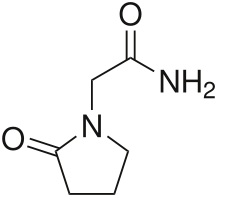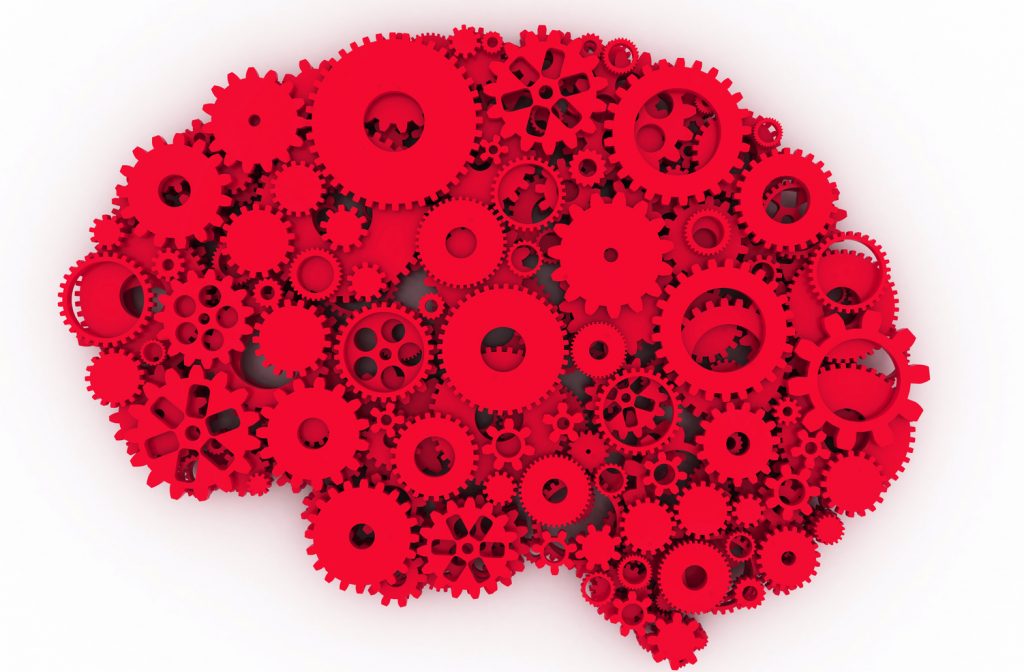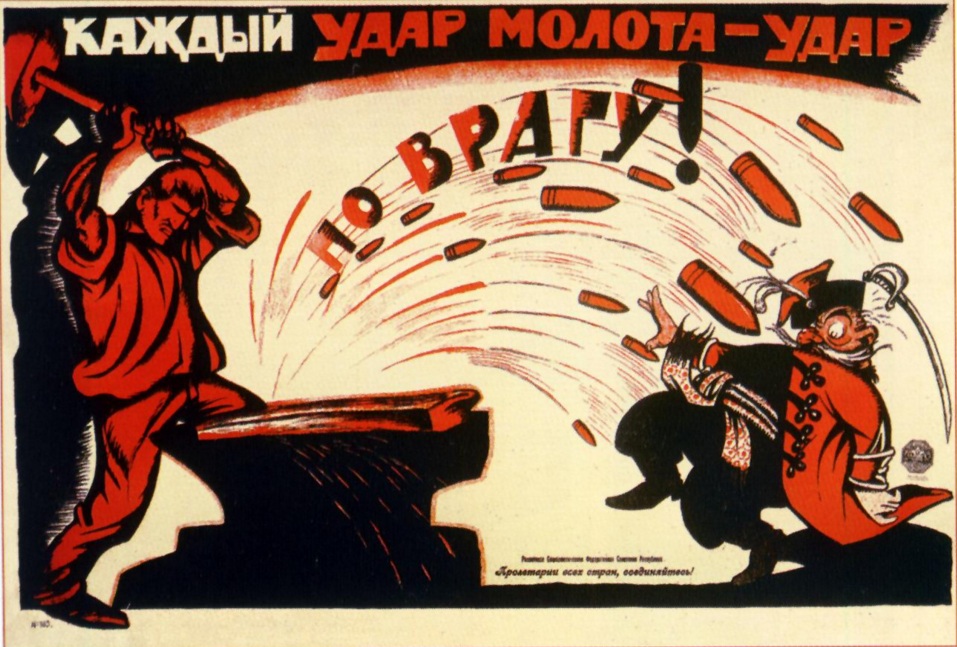![By Gustavs Klucis (1895-1938) (Marx, Engels, Lenin, Stalin (1933).jpg) [Public domain], via Wikimedia Commons](https://supplementsinreview.com/wp-content/uploads/2016/08/Marx_Engels_Lenin_Stalin_1933-1024x500.jpg)
“Man is not going to wait passively for millions of years before evolution offers him a better brain.” – Dr. Corneliu E. Giurgea
The problem with Charles Darwin’s concept of survival of the fittest:
It takes too long.
And when it came to deciding the victor of the Cold War, Soviet Russia wasn’t going to wait on natural selection.
Rather than relying on the organic progression of Darwin’s evolution, the USSR established an underground of pharmaceutical research dedicated to the enhancement of artificial biological intelligence. Their efforts ended in the development of bio-hacking, mind-altering, performance-enhancing drugs.
Otherwise known as Racetams.
About Racetams

Initially developed by Romanian psychologist & chemist Corneliu E. Giurgea to treat motion sickness, Piracetam immediately proved surprisingly successful in enhancing mental performance, memory consolidation, & information processing—properties never before seen in any lab-tested substance up to this point.
The 1964 discovery & subsequent research of Piracetam lead to the long line of chemical brain boosters known today as Racetams (Pronounced: Rah-suh-tams).
Despite their association with the USSR, Racetams were originally developed by the Belgium company UCB before grabbing mainstream attention. The defining characteristics of Racetams as determined by UC essentially established our current understanding of how nootropics work.
Dr. Giurgea’s Criteria for Nootropics
Modeled after Racetams, Dr. Giurgea’s descriptive criteria for nootropics consisted of:
- Enhancement of learning acquisition
- Resistance to disruptive mental conditions
- Facilitation of neuronal transfer of information
- Enhanced resistance to physical & chemical brain injury
- Increased tonic cortico-subcortical control mechanisms
- Absence of usual pharmacological side effects of neuropsychotropic drugs
An important distinction between Dr. Giurgea’s nootropic and a typical cognitive-enhancer (exempli gratia: caffeine, Adderall, Modafinil, etc. etc.) is that the former not only enhances cognition, but it possesses brain-protective elements that promote overall brain health.
Cool! ……How?
Admittedly, the underlying mechanisms of Racetams are fairly vague & unclear. However, preclinical research suggests that Racetam’s nootropic effects might include:
- Improving mitochondrial function in brain cells for optimal energy balance.
- Enhancing function of excitatory neurotransmitter pathways.
- Increasing acetylcholine & serotonin synthesis and utilization. (More on Neurotransmitters here)
- Resisting brain cell hypoxia & neurotoxins for improved cerebral circulation.
- Stabilizing membrane fluidity, particularly in conditions of Alzheimer’s.

Popular Types of Racetams
Overall, there are 19 types of Racetams. Their uses range through a variety of health & medicinal applications, but the 7 below are used primarily as nootropics.
- Piracetam. Originally developed to treat motion sickness, the first & most popular racetam, piracetam, shows significant benefits on mental performance, memory, and information processing with very low toxicity.
- Aniracetam. The popular alternative to piracetam that possesses similar cognitive benefits, but with stronger relaxing, anti-anxiety, mood-enhancing effects (albeit during a shorter timeframe).
- Oxiracetam. Generally recognized as a logic booster, oxiracetam creates “fast-acting” stimulatory effects by increasing acetylcholine concentration in neuron synapses.
- Pramiracetam. One of the most premium racetam forms, pramiracetam enhances cognition, concentration, & memory, showing therapeutic potential under conditions of traumatic brain injury.
- Noopept. Technically not a racetam molecule, Noopept is ranked as one for its similar effects on cognition & memory. Additionally, whereas piracetam shows improvements in memory processing, Noopept aids in memory consolidation & retrieval.
- Phenylpiracetam. The only racetam on this list that is currently banned by the World Anti-Doping Agency (WADA), phenylpiracetam’s higher potency classifies it as a stimulant. Animal research suggests it may have additional antidepressant, anti-anxiety, anticonvulsant benefits.
- Nefiracetam. Structurally similar to aniracetam, both are used therapeutically for cognitive decline. Nefiracetam lacks immediate bioactivity, requiring long-term supplementation to have any effect.
(Il)legality of Racetams
Despite their remarkably low toxicity, Racetams remain fairly controversial as most developed countries bar them by prescription—and some have been taken out of commission completely. Even in Russia (where their proven benefits on brain health were largely established) most Racetams are prescribed as drugs.
However, a look into Russian history suggests that this has less to do with intentions of safety & pharmaceutical control and more to do with political ideology and possibly… mind control.
Free Will in the Russian Empire

100 years or so before the revolutionary development of Racetam nootropic drugs, Russian philosopher & literarian Nikolai Chernyshevsky established the foundation for their controversial status with his 1863 socialist-dream novel What is to Be Done?
The sentiments expressed within the book, which would later be emulated by the Russian Republic’s head of government Vladimir Lenin and Russian-born American novelist Ayn Rand, suggested of a hypothetical Russia that could achieve a state of utopian harmony through:
- Utilitarianism – promotion of the greatest amount of good for the greatest amount of people; thus, maximizing utility, or the measure of preferences over some set of goods and services.
- Rational Egoism – the principle that rational behavior is established on the maximization of one’s self-interest. A “rational” ego acts solely in consideration of the consequent pleasure or pain for each chosen action—with a “rational” preference for pleasure, obviously.
Combined, these contradictory principles formed the idyllic socialist belief that the individual pursuit of happiness is only accomplished through political utilitarianism (i.e. by contributing to the greater good).
In time with English historian Henry Thomas Buckle’s (1821-62) famous formulation that the development of civilization leads to the cessation of violence, Russian officials applied Buckle’s scientific & logical pursuit of “civilizing” human emotion & motivation to Chernyshevsky’s “labor for the greater good” principles.
- In this sense, free will wasn’t viewed by the Russian Empire as a result of personal wanting, but rather governed by external laws of nature that could be understood & utilized to predict human behavior.
(Can you see where this is heading?)
The Surfacing of the Underground Man
To remain in the shallow end of Russian philosophy, we’ll forego the major existential counterpoints that responded to this scientific notion of quelling human behavior and instead reference the influential words of Fyodor Dostoevsky’s unnamed narrator (commonly referred to as Underground Man) in Notes from Underground.
As the personified opponent to Chernyshevsky’s pro-utilitarian concepts, Underground Man mocked the utopian ideology that pervaded 19th century Russian culture in his notorious soliloquy:

“These laws of nature need only to be discovered, and then man will no longer be answerable for his actions, and his life will become extremely easy. Needless to say, all human actions will then be calculated according to these laws, mathematically, like a table of logarithms, up to 108,000, and entered into a calendar; or, better still, some well-meaning publications will appear, like the present-day encyclopedic dictionaries, in which everything will be so precisely calculated and designated that there will no longer be any actions or adventures in the world.”
This, published in 1864, incidentally gained more relevance throughout the advancement of time & technology (Think: Human Genome Project, Human-Ape Hybridization, BRAIN Initiative, etc. etc.). More importantly, it represents the deep-rooted apprehension manifested by the Russian populace towards the presumably apocalyptic nature of government-sponsored research.
And it’s no coincidence that Underground Man’s popularity rose during the Cold War.
Nootropic Mind Control Optimization
![Ivan Pavlov and his team of conditioning science researchers. By Karl Bulla [Public domain], via Wikimedia Commons](https://supplementsinreview.com/wp-content/uploads/2016/04/Ivan-Pavlov06.jpg)
In Russia, the next step from there was the inevitable crossover from psychological comprehension to biological manipulation as Soviet scientists invested their psychopharmacological resources in modulating the physiological measures of behavior.
Enter: Racetams.
The Other Underground
As an introduction to Dr. Giurgea’s concept of nootropism, Racetams took the Soviet neuroscience community by storm.
Throughout the decades following Piracetam’s discovery in 1964, USSR neuroscientists carried the torch of nootropic research in an effort to expand their understanding of the mind from behind the Iron Curtain.
What followed was an underground collection of studies & discoveries that ultimately established what we now consider as modern psychopharmacology:
- Pushing off of Piracetam’s design, Soviet researchers further developed various Racetam drugs, such as Phenylpiracetam & Noopept, and spun off those developments to craft other nootropic drugs (eg. Picamilon, Semax, Selank). Additionally, they applied the nootropic concept to traditional Siberian & Chinese herbs (most notably Panax Ginseng, Rhodiola Rosea, & Eleuthero) to officially sanction their roles as performance- & mind-enhancers.
The fact that many of these weren’t known by the rest of the world until after the Cold War ended serves as testament to the USSR’s genuine belief in their advantageous properties.
The Secret Roles of Racetams & Other Nootropics
In the year prior to Piracetam’s discovery, Soviet neuroscientists were already beginning development of the “nootropic” Phenibut, an experimental drug intended to calm children with psychiatric disorders—later, its anxiolytic properties would be used as a focusing agent for cosmonauts.
And this set the tone early for the USSR’s Social Darwinian use of Racetams & other discovered nootropics:
- Reminiscent of Chernyshevsky’s utilitarian rational egoism, the Soviet government was secretly rationing nootropic supplements out to Soviet officials, Olympians, politicians, professionals, & cosmonauts to appease the USSR’s socialist agenda for maximum utility—except now with the added paradigm of competitive intellectual “warfare” against the capitalist Western world.
The raging battle for supremacy amongst the World Powers spurned the Soviet Union to attempt physiologically enhancing its populace not just to magnify the utilitarian rewards of labor, but to make its cosmonauts more focused than NASA, its Olympians more athletic than their competitors, its chess players *more smart than their global opponents (*smarter… yikes).
All of this without anyone outside of Russia knowing.
The Truth
However, following the 2013 release of German researcher Serge Kernbach’s paper on the “Unconventional research in USSR and Russia” it was revealed that the Soviet Union poured over $1 billion into the experimentation of mind-control from 1917 to 2003.
![Russian women protesting "NO PSYCHOTROPIC WEAPONS." By Copper Kettle [CC BY 2.0], via Wikimedia Commons](https://supplementsinreview.com/wp-content/uploads/2016/04/PsychotronicProtest-300x203.jpg)
Oddly enough, nootropics weren’t on the list.
At this point, it seems that the notoriety attached to nootropics is more associated with their upbringing in the underground labs of Soviet Russia than the content of their research—seeing as nothing in the research suggests that Racetams enable mind-control.
(…Or perhaps that’s just what they want you to think.)
Realistically, as exciting as wide-scale political conspiracies are, Racetams and most (if not all) USSR nootropic drugs were likely developed with more pragmatic (rather than diabolic) goals in mind—especially when you consider that these nootropics were either already established (Rhodiola, Eleuthero, etc.) or discovered serendipitously (Piracetam, Phenibut, etc. etc.).
Mind Control in the U.S.A.
The psychotronic experiments draw many similarities to the controversial secretly-funded CIA program MKUltra. Made recently famous in the 2009 film The Men Who Stare at Goats, MKUltra chased the possibility of “mind-manipulation” via altering brain function through electromagnetic emissions. Also, rather than subjecting their subjects to brain-healthy Racetams, MKUltra scientists experimented on humans (often unwittingly) with harmful psychoactive drugs, such as LSD, Ketamine, Metrazol & mescaline.
Conclusion
What was once privy to the Soviet elite is now a topic of increasing clinical & academic interest across the world.
Despite their wavering legality, Racetams are widely used as healthier alternatives to the likes of Adderall & Modafinil for their neuroenhancing effects on cognition and as therapeutic devices on neurodegenerative conditions for their brain-protective benefits.
All-in-all, while the historical progress of Soviet nootropic research has its share of mystery & intrigue, its culmination points to a boring, yet rather pleasant anti-climax:
When used the right way, Racetams may be good for your brain and brainpower.
Leave a Reply